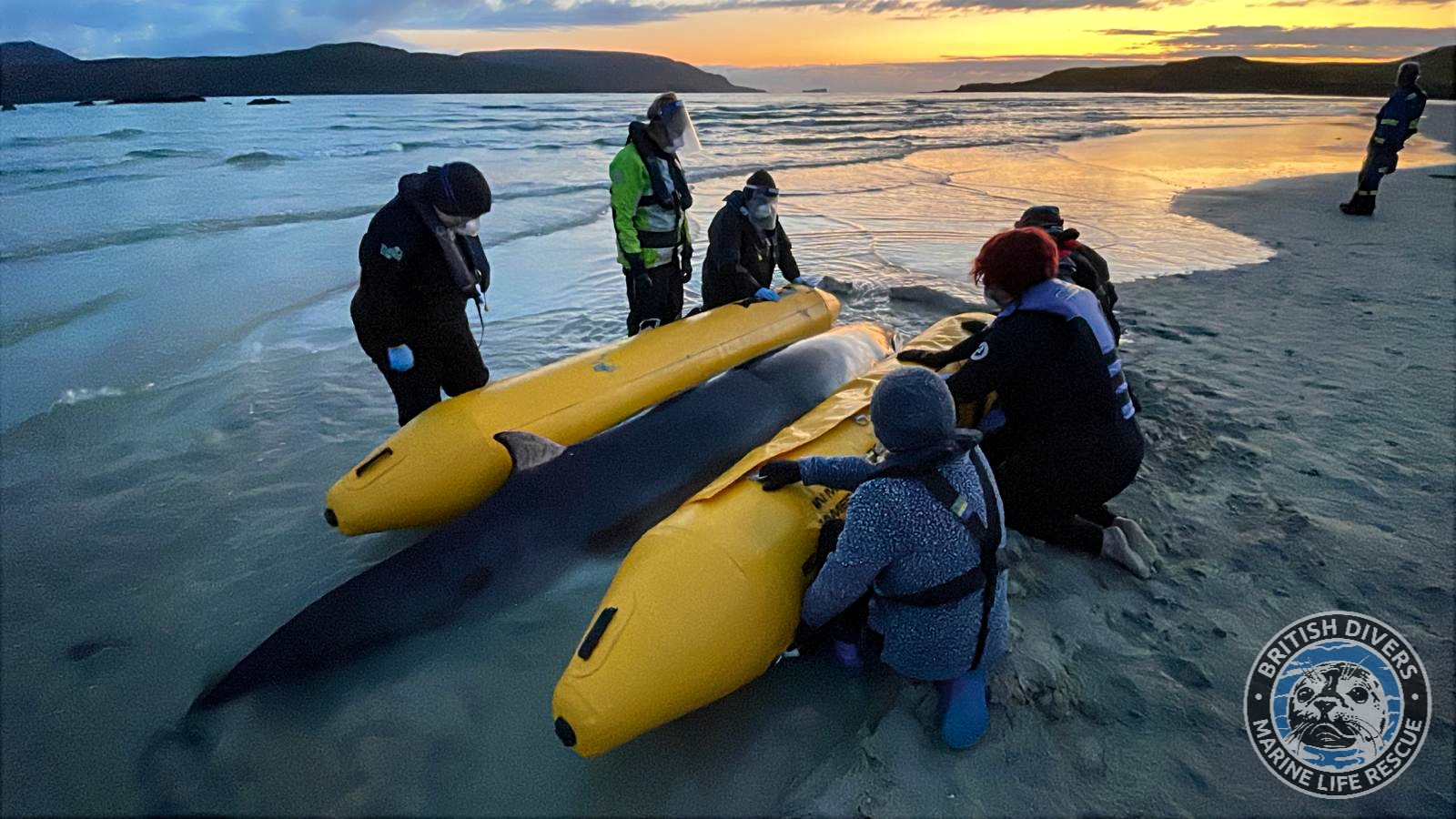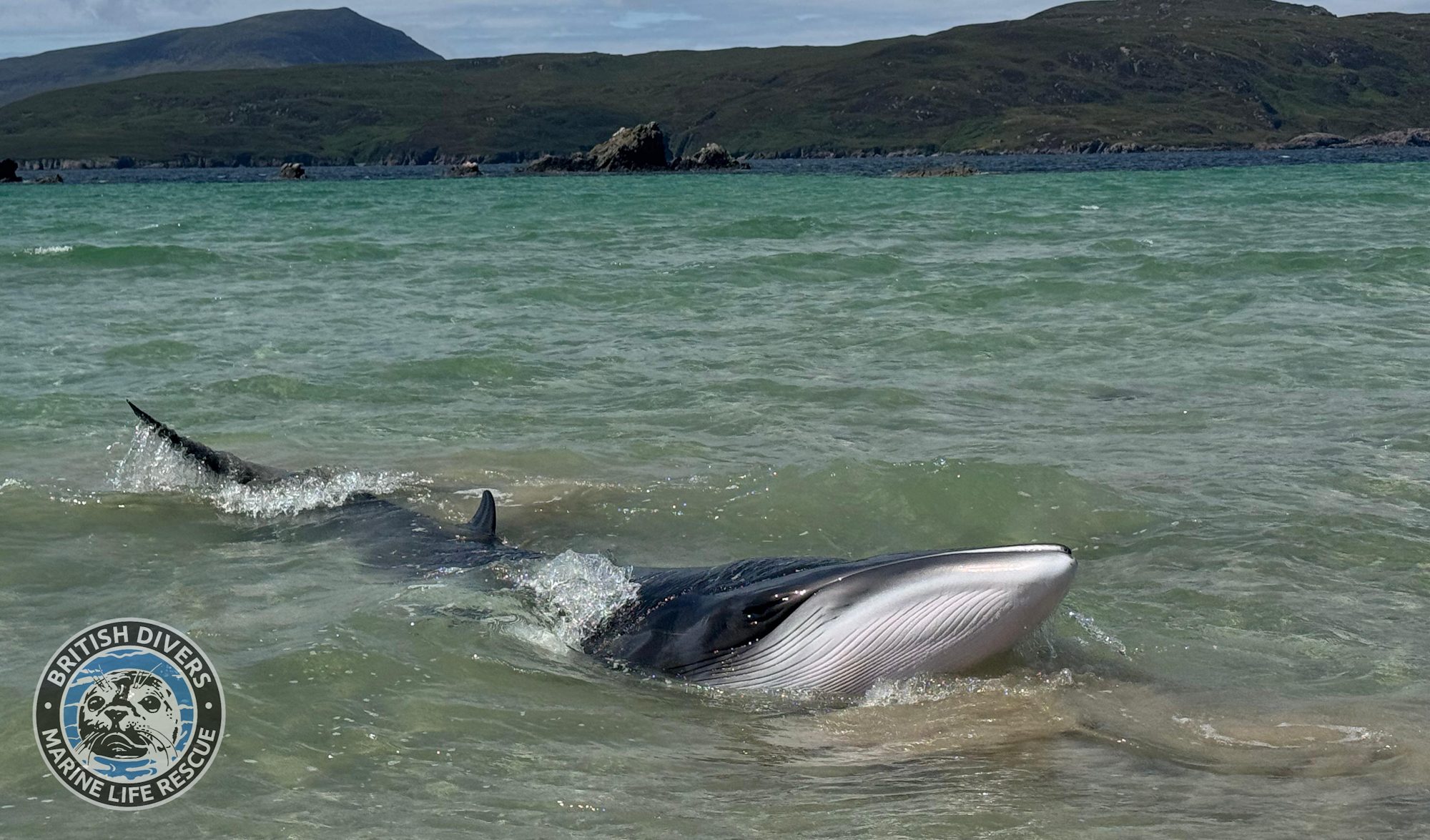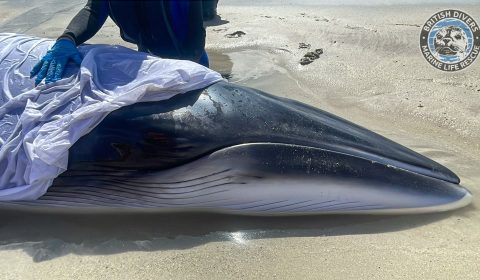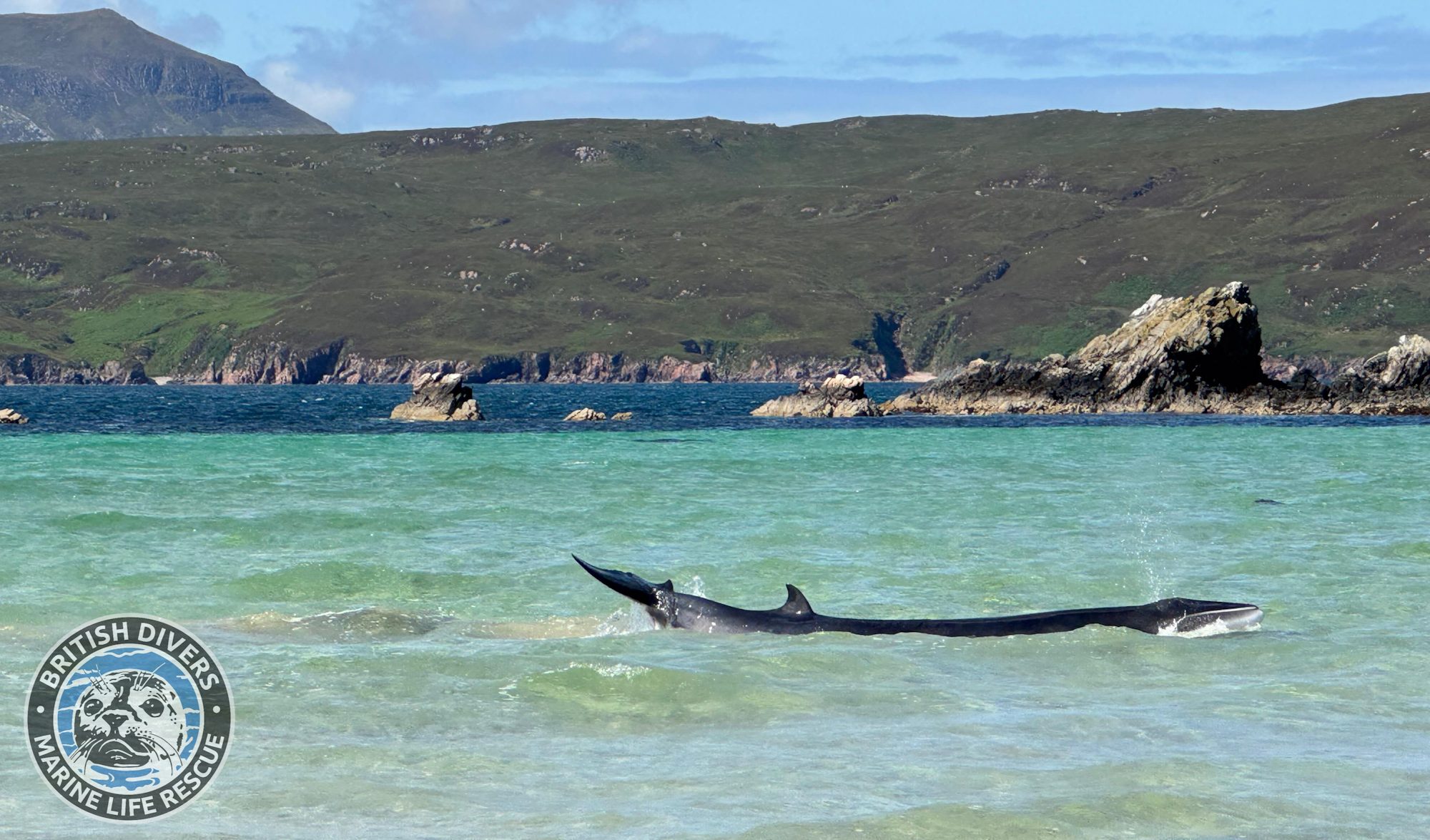
Picture by Andrew Spence
On Tuesday 1 July, a young minke whale was found stranded on a beach in the far north of Scotland near Durness. The call came in at around 8.30am from a member of the public who had been out walking and, using a What3Words reference, provided the exact location of the stricken animal. We mobilised a team of Marine Mammal Medics to attend, with some travelling from as far away as Ullapool, Achnasheen, and Thurso.
By 10am, with a small number of BDMLR volunteer Medics on scene, the whale was in shallow water as the tide slowly crept back in. A small crowd had formed around the animal, who were advised to keep back as it was trying to move itself on the soft sand beneath its body. At this time, the whale was quite stressed with an elevated breathing rate, but appeared to be in good body condition with no visible injuries. With specialised rescue equipment still on the way, Medics used simple techniques to assess and provide basic first aid, helping to keep the whale calm and minimise skin damage from the elements. With 1.5 miles of soft white sand, there was little risk of immediate injury; however, the shallow bay in which it was located floods slowly and remains shallow.
By 1.00pm, at high tide, concerns were rising that the water would not be deep enough for the whale to refloat itself. As the water rose, the whale’s movements became erratic due to being lodged on a sandbar, making it unsafe for anyone to approach and manoeuvre it manually. With ongoing assessments and veterinary advice, a planned refloat was still our hope for a successful outcome. As the tide receded, the whale was moved onto BDMLR’s whale pontoons to keep it supported while Medics continued to administer first aid. It was at this point that we were also able to get an accurate measurement of the whale which was just over 4 metres – very close to weaning length. As the individual was deemed to be in good overall condition, a refloat trial was still on the cards.
With more volunteers arriving throughout the day and taking turns to tend to the whale, it became a waiting game until the tide returned. At 11.30pm, the whale was supported in the water, still on the rescue pontoons, and its breathing rate remained within normal parameters. This was the one chance to get the whale back out to open water. After a short time, the whale made sudden movements and worked its way free, but was unable to support itself, listing to one side. With the animal now able to move freely, it was no longer safe—or possible—to get it back into the support system. After a short period, the difficult decision was made to prevent any further suffering, as the animal had now been out of the water for the maximum amount of time possible to attempt another refloat.
The whale was euthanised at 12:50am, marking one of the longest rescues BDMLR Medics have ever undertaken.
We’d like to extend our thanks to HM Coastguard teams from Durness, Kinlochbervie and Melness for providing safety cover twice during the operation, local businesses and residents for their support, providing sustenance to the volunteers and helping with the rescue effort. Plus, of course, a huge thank you to all our BDMLR Medics who dedicated their whole day and night to assist the whale.



Photographs by Andrew Spence and Donna Hopton